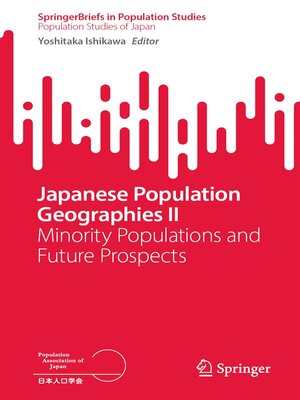Japanese Population Geographies II
ebook ∣ Minority Populations and Future Prospects · SpringerBriefs in Population Studies
By Yoshitaka Ishikawa

Sign up to save your library
With an OverDrive account, you can save your favorite libraries for at-a-glance information about availability. Find out more about OverDrive accounts.
Find this title in Libby, the library reading app by OverDrive.



Search for a digital library with this title
Title found at these libraries:
| Loading... |
This is the first anthology that conveys in detail the actual situation of population geographies in Japan, a country facing some of the world's most serious demographic trends such as low fertility, population aging, and depopulation. The anthology consists of two volumes with the common title Japanese Population Geographies. All of the included entries are based on original Japanese papers written by leading geographers and published within the past few years, useful for understanding Japan's current population geographies.
The first volume analyzes the postwar transition of internal migration, examining the structural changes of population in urban areas, and proposes a new measure different from the traditional resident population. This volume also presents an investigation of the retirement migration of baby boomers as well as displacement migration due to the 2011 Great East Japan Earthquake.The second volume's contents examine the residential choicesof minority populations such as foreign residents and sexual minorities. It also discusses future prospects associated with mono-polar concentration into Tokyo, regional forecasting using population projections based on small-area units, and the importance of a politico–economic perspective in future research.
Taken as a whole, this anthology offers the following two significant contributions. First, the excellent achievements obtained in Japan, which is experiencing serious demographic trends, reflect key developments within the context of the world's population geography. The second contribution is that the publication brings the latest insights and important policy implications to countries that are facing various issues associated with decreasing fertility, aging population, and declining population.






